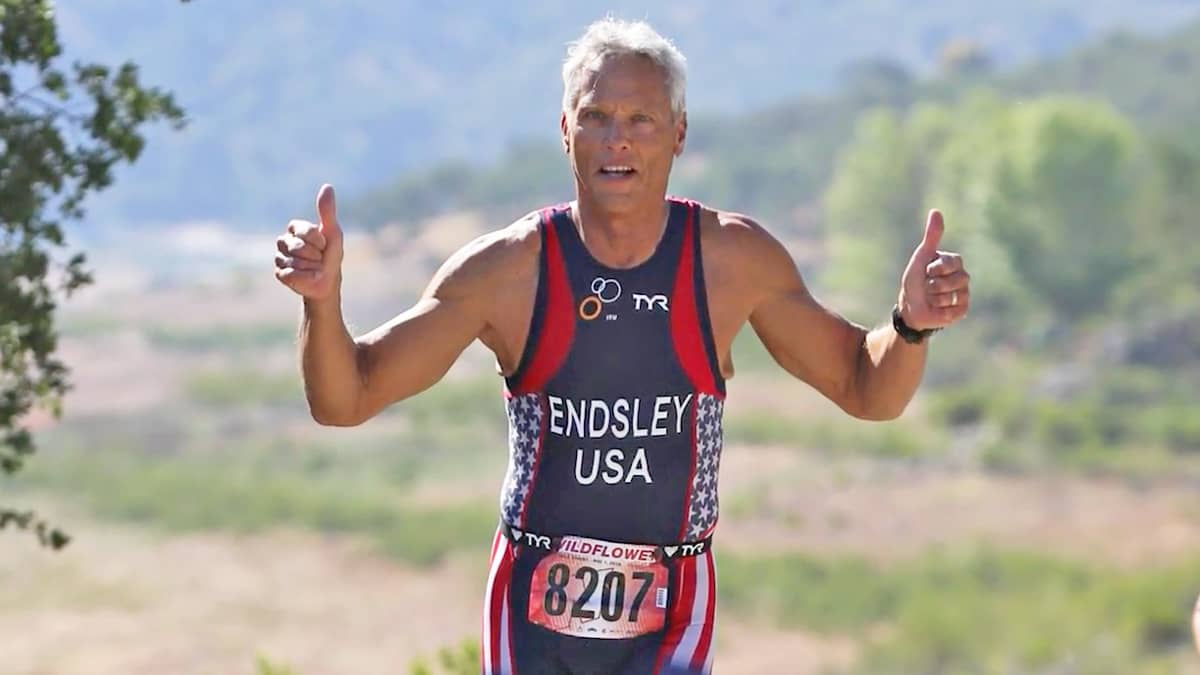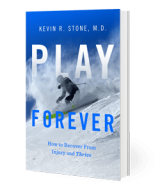Don't Go Home & Rest: Personal Strategies for Arthritis Care
“Go home and rest. Wait for your joint replacement. Take ibuprofen. Then, after your procedure, rest some more. Walk, but don’t exercise too much. Don’t wear it out.” These out-of-date responses to arthritic joint pain are flat-out wrong.

Triathlete champion and Stone Clinic partial knee replacement Scott Endsley
If you have arthritis, going home and resting produces muscle atrophy, bone loss, and loss of balance and coordination. It increases obesity and can lead to depression.
Exercise designed to protect the arthritic joint, while simultaneously building the muscles around it and the rest of the body, increases function and decreases the forces acting across the joint surface. It improves balance and coordination (limiting falls), helps control weight, and improves one’s sense of well-being. So the logical treatment for arthritis is a program of smart, progressively-increasing exercises.
Exercising alone, however, is not as effective as doing so under the guidance of a physical therapist or trainer. Such guidance provides objective measurements of your advancement, instruction in new exercises, safe and efficient techniques, and a competitive motivation to improve—all factors that drive our progress. Meanwhile, the increase in circulating testosterone, pheromones, and adrenaline generated by exercise drive well-being. Exercising outdoors has an improved wellness value over indoor exercise. Most outdoor exercises require balance, expose the skin to sunlight (needed for vitamin D production and bone formation), and are mentally expansive. If you like using gym equipment, move your setup outside or find outdoor fitness stations.
After artificial, partial, or complete joint replacement, the advice is the same. We have never seen a well-placed artificial joint that has worn out from exercise. The most common cause of wear is loosening of the cement interface with the bone, most likely caused by a weakening of the bone with aging. But by using modern, robotic-guided total joint replacement, we eliminate the need for cement (as the bone grows into the new porous underside of the implants). Increasing exercise will not loosen the implant; only osteoporosis will. The only known way to increase bone mass is by resistive exercise. So increase your walking, hiking, skiing, and weightlifting to save your artificial joints.
The most common question we hear about sports and joints concerns running. Be advised: our views on this subject are not shared by all doctors. First, a question: Which places more force on the knee joint, running a mile or walking a mile? The answer is that the quantity of force is about the same, due to the fact that you take more steps when walking. Still, peak forces are higher in running. If you must run, use “Chi running” techniques. These involve short strides, midfoot landing, soft surfaces, and new running shoes which decrease peak forces.
While running is not our favorite sport for artificial joints—and since most people with severely arthritic knees gave it up years ago—we prefer to encourage other activities such as skiing, hiking, biking, swimming, yoga, Pilates, and/or weightlifting, all of which load the bones and muscles without high-peak impacts. (Running can be so pleasurable, however, and so unlikely to cause damage, the benefits for addicted runners outweigh the potential risks.)
As for the use of anti-inflammatory drugs—ranging from over-the-counter drugs, such as Advil or Motrin, to stronger prescription brands—these do work to reduce swelling and pain, and are a godsend to many people suffering with arthritic symptoms. Yet the downsides must be managed as well. NSAIDs decrease collagen formation, leading to poor healing of soft-tissue injuries, and they inhibit bone formation, leading to stress fractures. Meanwhile, according to the American Gastroenterological Association, the serious side effects of NSAIDs, such as stomach bleeding, result in more than 100,000 hospitalizations and thousands of deaths each year in the US.
Additionally, when it comes to arthritis, NSAIDs can often exacerbate the problem by masking injuries that are sometimes fixable. A torn meniscus, for example, can lead to osteoarthritis—yet if it were treated, repaired, or replaced, the arthritic damage that it produces in the joint would be diminished. When possible, it’s best to address the cause of the arthritis by repairing the underlying problem rather than taking painkillers to cover up the pain.
Some patients are able to improve their symptoms and cut down on their painkillers by taking both oral supplements (such as glucosamine) and injections (with hyaluronic acid). These help a large subset, but not all, of patients with arthritis. Unfortunately, while we cannot tell in advance who will benefit, trial and error with these treatments has no known downside. In our practice, approximately 30 percent of our patients were “super responders” to either glucosamine and/or hyaluronic acid injections, getting up to a year of relief from a single injection. Thirty percent of our patients had a mixed response, and 30 percent seemed to gain no benefit. But after we created a cocktail combining hyaluronic acid plus platelet-derived growth factors (PRP) from the patient, our efficacy in arthritic joints rose to 80 percent, with patients reporting significant symptom improvement at 12 months. Many of our arthritic patients come in once or twice a year for this combination cocktail.
So go home, and start exercising. Live long by being active.
This article is an excerpt from Dr. Stone's book Play Forever. For more arthritis recovery guidance, check out Play Forever: How to Recover from Injury and Thrive, available on Amazon now.

